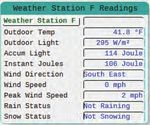Light Sensors MAKING SENSE OF - Greenhouse Product News
←
→
Page content transcription
If your browser does not render page correctly, please read the page content below
RESEARCH
MAKING SENSE OF
Light Sensors
Learn to convert radiation data from your environmental computer into daily light integral.
BY ROBERTO G. LOPEZ AND ERIK S. RUNKLE
D
uring the winter, greenhouse growers in Northern regions often
become concerned that their plants are not receiving enough
light to produce good quality crops. However, many do not
know what light levels their crops are receiving because they do not
understand the radiometric units their environmental computers display
each day. In this article, we discuss light sensors, light units, and how
to convert the units your environmental computer displays into more
meaningful values.
Plants use and respond to wavelengths of solar radiation ranging
from UV-B (as low as 280 nm) to far-red (FR) light (as high as 750 nm
or so). However, photosynthesis is mainly stimulated by wavelengths of
light between 400 and 700 nm, which is known as photosynthetically
active radiation (PAR). Outside of the PAR range, energy can contribute
less or not at all to photosynthesis but may influence the concentration
of pigments (UV radiation), regulate photoperiodic and elongation
responses (FR radiation), and increase plant temperature (infra-red; IR).
These wavebands as well as other light terms and units are defined in
the sidebar.
There are several units used by scientists and growers to measure light
Chuck Jagger, director of production at Henry Mast Greenhouse in Byron
both inside and outside the greenhouse. For plant applications, we should
Center, Michigan is downloading accumulated radiation data from their
use light units that represent the number of photons within PAR since environmental computer to calculate the daily light integral (DLI) for the
they are what drive photosynthesis and thus plant growth. Therefore, we previous day.
need to use quantum units. Since the number of photons is so large, we
measure them in moles (mol) of photons, and 1 mol = 6.022 × 1023. One
micromole (μmol) equals 1 × 10-6 mol so therefore, 1 μmol = 6.022 × 1017.
Most environmental control computers are connected to a pyranometer
mounted to a weather station outside the greenhouse (Figure 1). This
sensor measures total short-wave energy from 300 to 2,800 nm from the
sun and sky. This includes UV radiation, photosynthetic (and visible) light,
near infra-red (NIR), and IR. These measurements can be used to assist
in an array of climatic and irrigation decisions and environmental control
settings such as heating, cooling, shading, irrigation, and supplemental
lighting. Figures 2 and 3 show screenshots as examples of radiation sums
reported by environmental control computers.
Pyranometers measure total short-wave energy, but we are interested in
photons within PAR. A pyranometer provides radiometric units, which are
typically expressed in watts per square meter (W∙m-2) or joules per square
meter and second (J∙m-2∙s-1). (Note that 1 W = 1 J∙s-1.) Since we are most
interested in PAR, we need quantum units in μmol∙m-2∙s-1. Therefore, we
need to do some math to convert from radiometric to quantum units.
As noted above, 1 J∙m-2∙s-1 equals 1 W∙m-2. The approximation that 1 W∙m-2
or J∙m-2∙s-1 ≈ 4.57 μmol∙m-2∙s-1 for sunlight (conversely, 1 μmol∙m-2∙s-1 = Figure 1. A pyranometer mounted on a weather station atop a greenhouse.
0.22 W∙m-2) can be used IF the W∙m-2 or J∙m-2∙s-1 that your environmental (Photo: Jonah Brown)
28 FEBRUARY 2021 GPNMAG.COMRESEARCH
QUANTUM
Instantaneous average Cumulative Table 1. Example showing the yearly
Radiometric minimum, maximum, and average
(per second) (daily light integral)
solar radiation conversion from
J∙cm-2∙d-1 µmol∙m-2∙s-1 mol∙m-2∙d-1 joules per square centimeter per day
49 11 1.0 (J∙cm-2∙d-1) to micromoles per square
Yearly Minimum
meter per second (μmol∙m-2∙s -1) to
Yearly Maximum 2,951 669 57.8 the daily light integral in moles per
square meter per day (mol∙m-2∙d-1) for
Yearly Average 1,230 279 24.1
a greenhouse in a northern latitude.
computer displays is only for PAR radiation (from 400 to 700 nm).
However, almost all pyranometers measure total short-wave radiation
TERM DEFINITION
and not just the energy in PAR. Therefore, we need to use a different
Daily light integral Cumulative amount of PAR that is delivered each conversion factor.
day. It is expressed as moles of light (mol) per Approximately 43% of the energy from the sun is within the PAR
(DLI)
square meter (m-2; 10.8 square feet) per day (d-1) or
(mol∙m-2∙d-1) (mol∙m-2∙d-1). range, so we need to use the conversion factor of ≈1.96 (rather than
Light is a form of energy called electromagnetic 4.57) μmol∙m-2∙s-1 per watt of energy. Check with your environmental
Electromagnetic radiation, which varies in duration (energy over control computer company to find out what units their system reports.
radiation time), quality (wavelength or color), and intensity Some provide instantaneous units in J∙cm-2∙s-1 or J∙m-2∙s-1 while others
(the amount of light at each wavelength or color).
provide cumulative units (the radiation sum per day) of J∙cm-2∙d-1 or
Illuminous photometric unit based on the amount J∙m-2∙d-1. Table 1 provides an example of light data measured outside a
Foot-candle (fc) of visible light detected by the human eye (primarily
green light) and therefore, not appropriate for plants. greenhouse located in the Midwest.
Scientific unit for energy that measures the capacity
Joule (J)
to do work or generate heat.
Very large constant number used in chemistry
Mole (mol) or
(6.02 × 1023) and a micromole is one millionth
micromole (µmol)
of a mole.
Nanometer (nm) A unit of wavelength [billionths of a meter (10-9 m)]
Individual packets or particles of light energy. The
Photon or quantum amount of energy in each photon depends on its
wavelength (color).
Photosynthetically
active radiation
(PAR)
Photons with wavelengths between 400 to 700 nm,
which are capable of stimulating photosynthesis. LEADS THE WAY
Photosynthetic
The amount of PAR reaching a unit area (usually m2)
photon flux density
per unit of time (usually second; s). The America in Bloom national awards program brings out the best in hometowns
(PPFD) and empowers communities to excel. Lead the way and experience the benefits by
Photometric unit
Measurement of light based on its perceived registering today.
brightness and thus, is biased toward people.
(fc or lux)
1 fc = 10.8 lux.
Measurement of the number of micromoles (μmol) in
the PAR range that reaches one square meter (m2)
Quantum unit every second (s), or μmol∙m-2∙s -1. Quantum meters
(μmol∙m-2∙s -1) are the most appropriate instrument to measure
light intensity for photosynthesis and plant growth
because it is not biased toward the human eye.
Radiometric unit
Measurement of radiant energy.
(W∙m-2)
COMMUNITY INVOLVEMENT ENVIRONMENTAL ACTION
Short-wave radiation Wavelengths from 100 to 2,800 nm
Wavelengths from 100 to 400 nm, although most
Ultraviolet (UV)
radiation with wavelengths less than 300 nm is
radiation
blocked by the ozone layer.
A unit for the rate of energy use or irradiance.
Watt (W)
1 Watt = 1 J∙s-1
HERITAGE PRESERVATION PLANT BENEFITS
Wavelength
The distance between two crests of a wave.
(nm)
www.AmericaInBloom.org
Sidebar. Terms, units, and definitions related to plant lighting applications.
GREENHOUSE PRODUCT NEWS 29RESEARCH
Figure 3. A screen
shot of an Argus
environmental
computer weather
station. Note how
accumulated
radiation sum
(“Accum Light”)
was 114 joules per
Figure 2. A screen shot of a Priva environmental computer weather station. Note how square centimeter
the radiation sum the previous day was 272 joules per square centimeter per day. per day.
CONVERSIONS IN ACTION The transmission percentage can be determined by taking a light
Let’s say you want to calculate the daily light integral (DLI) that is reading outside the greenhouse on a clear day around solar noon, then
reaching your greenhouse (outside) each day, and your environmental going inside and measuring light intensity in your greenhouse at plant
computer provides a radiation sum in J∙cm-2∙d-1. Let’s use an example of height. You can then calculate what percentage of light outdoors is
1,230 J∙cm-2∙d-1. First, let’s convert cm2 to m2: transmitted inside. In this case, any kind of light sensor can be used to
1,230 J∙cm-2∙d-1 × 10,000 cm2 per m2 = 12,300,000 J∙m-2∙d-1 determine the light transmission percentage.
For example, if you measured 1,400 μmol∙m-2∙s-1 outside and
Next, let’s convert days into hours and then into seconds: 925 μmol∙m-2∙s-1 inside, then your light transmission percentage is
12,300,000 J∙m-2∙d-1 / 24 h per d / 3,600 s per h = 142.4 J∙m-2∙s-1 approximately:
925 μmol∙m-2∙s-1 / 1,400 μmol∙m-2∙s-1 = 66%
Since 1 W = 1 J∙s-1, we can convert this to W∙m-2 so it has a value of
142.4 W∙m-2. As discussed earlier, there is 1.96 μmol∙m-2∙s-1 of PAR for Using the example above, the indoor DLI would be 24.1 mol∙m-2∙d-1 ×
every 1 W∙m-2 of short-wave radiation, so we can then convert this into 0.66 = 15.9 mol∙m-2∙d-1.
quantum units: The light transmission percentage of a greenhouse changes over time,
142.4 W∙m-2 × 1.96 μmol∙W-1 = 279.0 μmol∙m-2∙s-1 especially when whitewash is applied or removed, or when new glazing
is installed. Therefore, it should be measured periodically to improve
This is the average value received during a 24-hour period. We can
accuracy of your readings.
convert this from an instantaneous quantum unit of μmol∙m-2∙s-1 to a
To conclude, if your environmental control computer measures short-
daily light integral (DLI) cumulative unit in mol∙m-2∙d-1:
wave radiation and reports it in the unit of J∙cm-2∙d-1, then you can
279 μmol∙m-2∙s-1 × 3,600 s per h × 24 h per day =
convert that value into DLI using this conversion: 1 mol∙m-2∙d-1 = 51.0
24,105,600 μmol∙m-2∙d-1
J∙cm-2∙d-1 or conversely, 1 J∙cm-2∙d-1 = 0.0196 mol∙m-2∙d-1.
Since there are 1,000,000 μmol per mol, we can then convert this For growers who do not have an environmental control computer that
into mol∙m-2∙d-1: measures radiation sum, then the daily light integral outside can be
24,105,600 μmol∙m-2∙d-1 / 1,000,000 μmol per mol = estimated at your location by using DLI maps that are on the American
24.1 mol∙m-2∙d-1 Floral Endowment website at endowment.org/dlimaps (for U.S. locations)
or SunTracker Technologies’ website at dli.suntrackertech.com (for
This is the DLI delivered outdoors, since your sensor is located worldwide locations). Next, calculate the greenhouse light transmission
outside. For plant growth, we need to know what the DLI is inside your percentage to estimate the DLI delivered to your crops inside.
greenhouse; this depends on light transmission through the greenhouse
glazing, the greenhouse structure, and overhead obstructions such as Roberto G. Lopez (rglopez@msu.edu) is an associate professor and Controlled
hanging baskets and lighting fixtures. The light transmission inside a Environment and Floriculture Extension specialist and Erik S. Runkle
greenhouse and to your crop is usually between 60 and 80% when there (runkleer@msu.edu) is a professor and Floriculture Extension specialist
is no shading (whitewash or shade screen). at Michigan State University.
30 FEBRUARY 2021 GPNMAG.COMYou can also read

























































